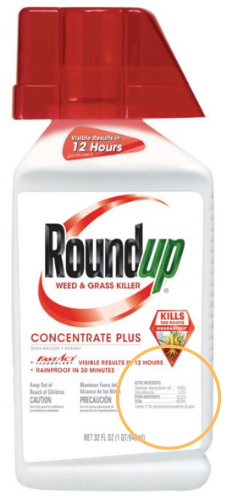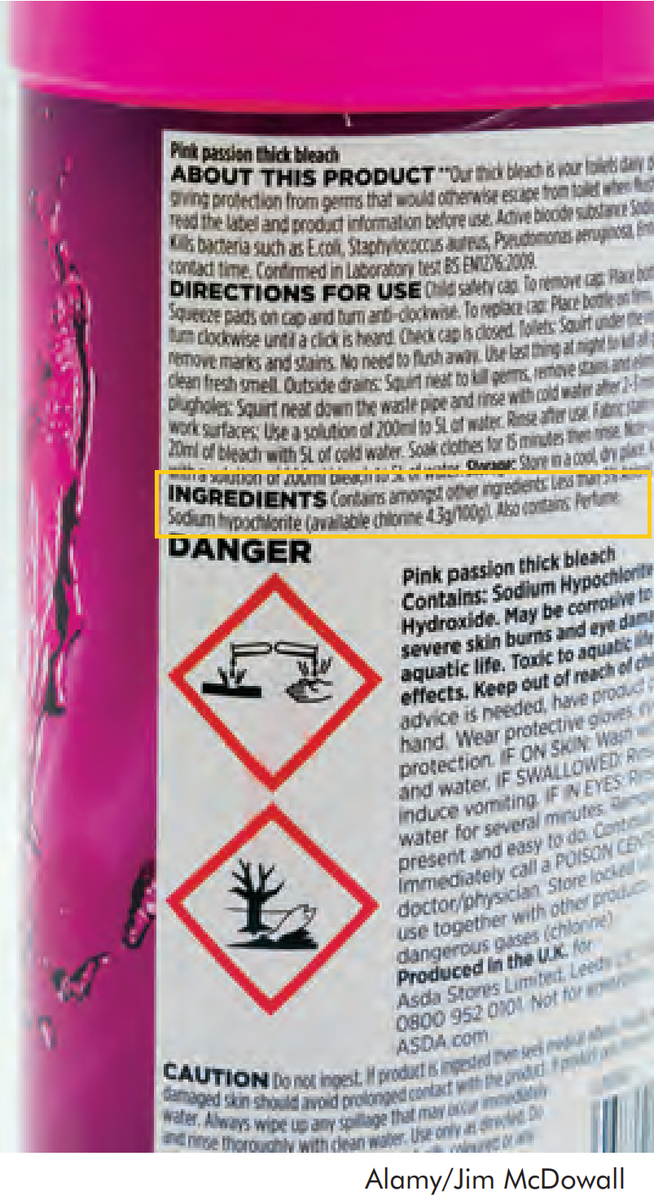Gateway on Pesticide Hazards and Safe Pest Management
How To Find Ingredients in Pesticide Products
Beyond Pesticides offers resources below to evaluate the health and ecological effects of specific chemical exposure from ACTIVE INGREDIENTS in pesticide products, as well as regulatory information and supporting scientific documents. Because various pesticide products can contain more than one active ingredient, it is important to READ the LABEL to determine chemical components.
With 192 different active ingredients and counting, it is essential to establish the connection between the use of these chemicals and their respective hazards.
View the step-by-step guide on how to search for the active ingredient(s) in pesticide products below:
- Go to U.S. EPA's Pesticide Product and Label System and enter the product name. The generic product name may vary.
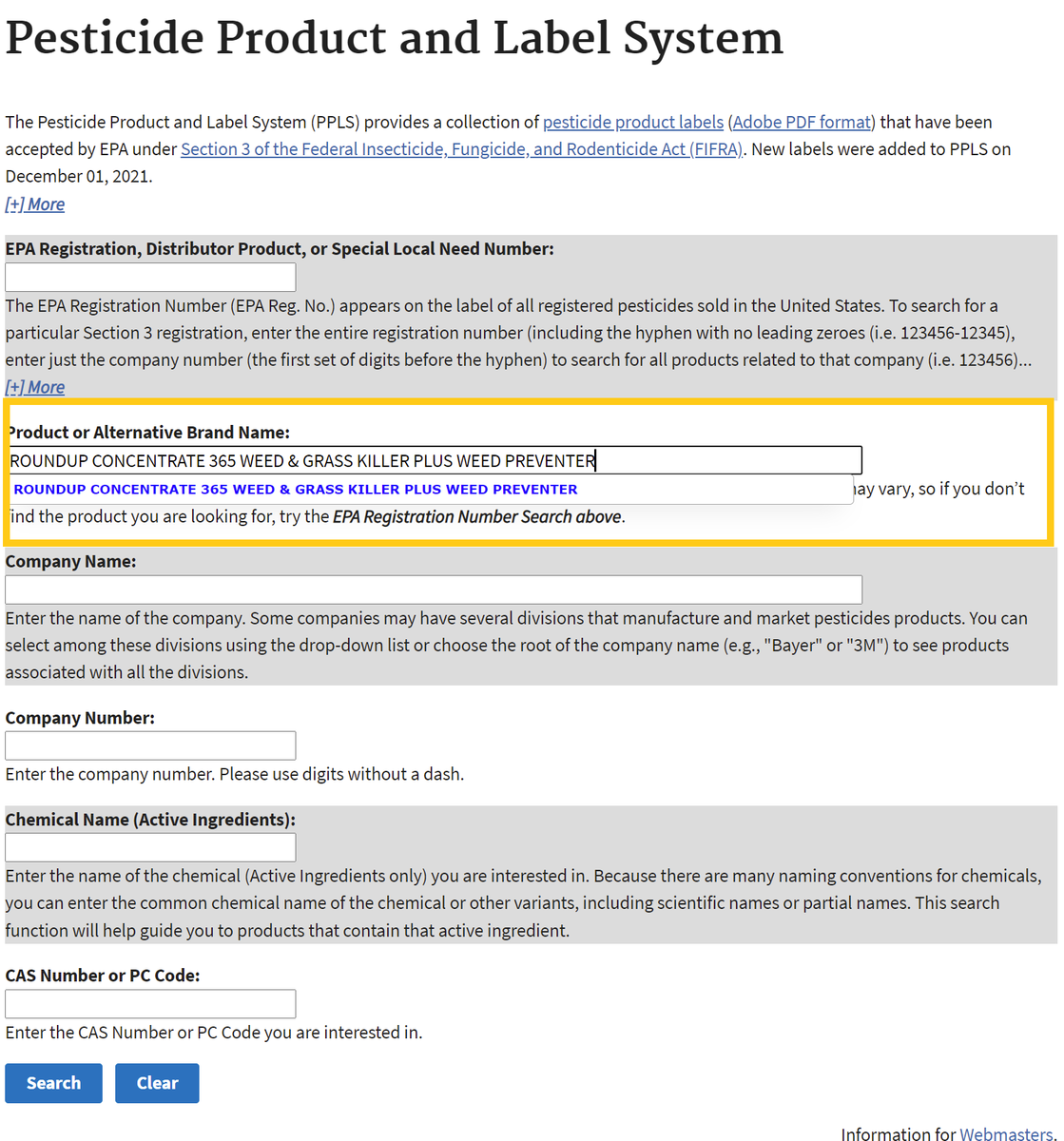
- After searching, click on the chemical ingredients tab or the link for the most recent label to find Active Ingredients.
Chemical List Label List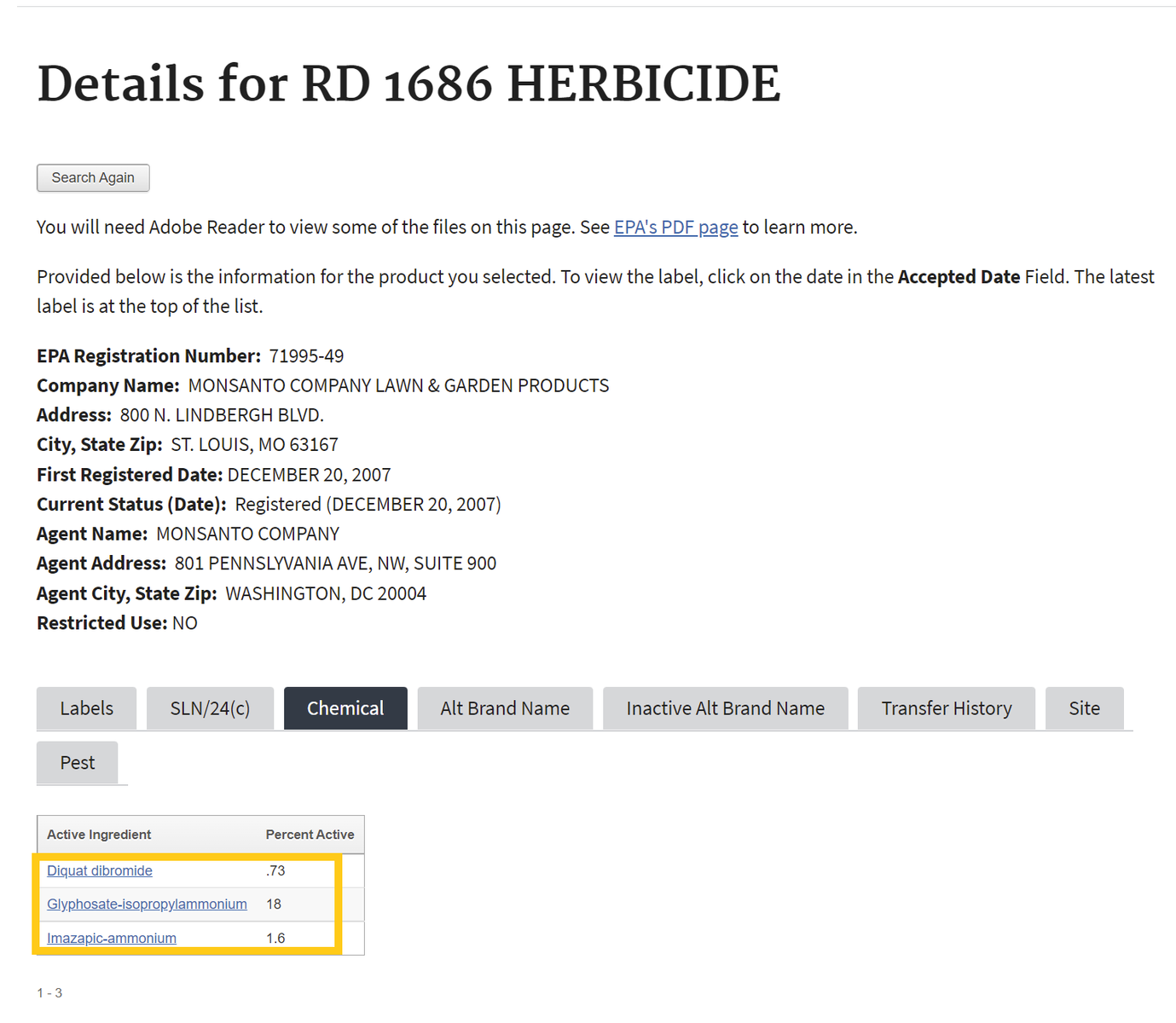
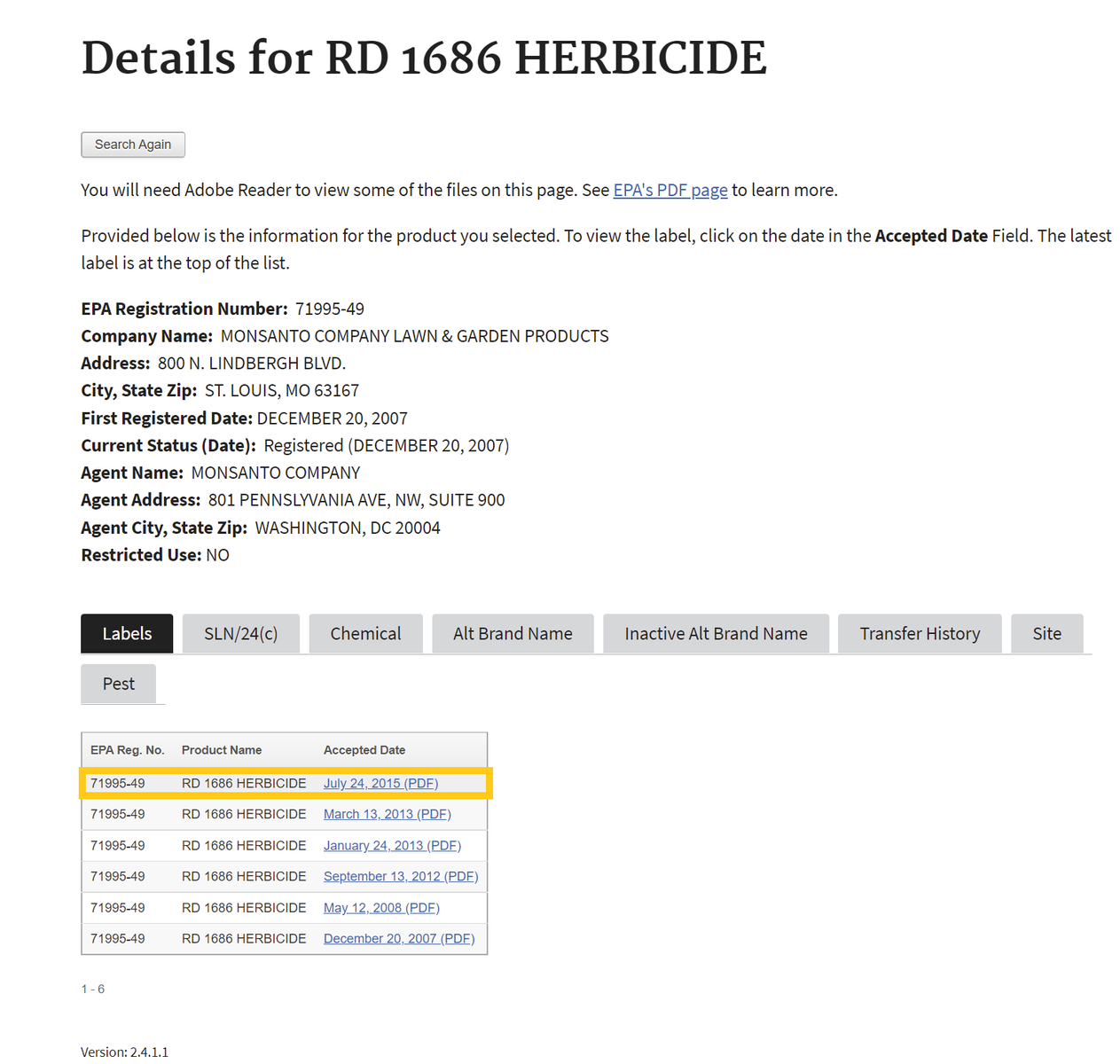
If one selects the chemical ingredients tab, skip to Step 4 . If not, proceed to step number 3 - To find the active ingredient(s) on the label, search for the page in the document containing the date of registration. Usually, the active ingredients section occurs within the first few pages of the label document.
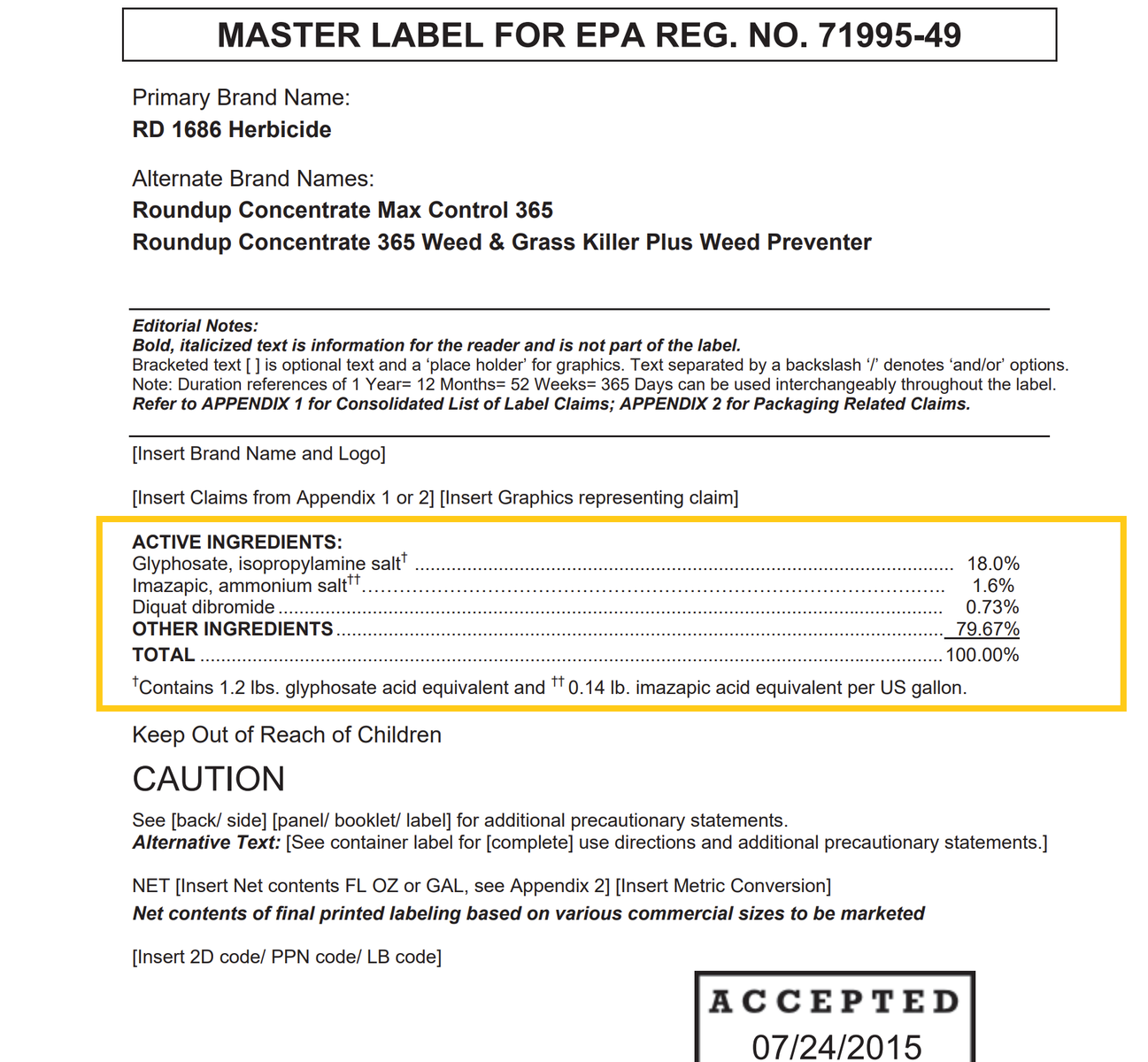
- Return to the Beyond Pesticides Gateway and search for the active ingredient name in the yellow box to the right or from the list below.
SEARCH
OR, select one or more of the effects below:
Each pesticide name below will take you to chemical information pages with links to factsheets, basic chemical, alternatives, health and environmental effects, regulatory status, key studies and more. See also Beyond Pesticides' pest management resources, health effects and other factsheets, and activist tools.
For more general information, read What Is a Pesticide?
Scroll down this page to see the list of featured pesticides, or search for specific ones using the box on the right.
FEATURED PESTICIDES
1-naphthaleneacetic acid (NAA)
2-Phenylphenol (o-phenylphenol)
4-Chlorophenoxyacetic acid (4-CPA)
Alkyl dimethyl benzyl ammonium chloride (ADBAC)
Benzylchlorophenol (2‐Benzyl‐4‐chlorophenol)
Chromated Copper Arsenate (CCA)
Disodium Methanearsonate (DSMA) ![]()
Ecolyst (N-N-diethyl-2-(4-methylbenzyloxy) ethylamine hydrochloride)
Halohydantoins (dihalodialkylhydantoins) (several)
MCPB (4-(2-Methyl-4-chlorophenoxy) butyric acid)
Monosodium methanearsonate (MSMA)
PCNB (Quintozene, Pentachloronitrobenzene)
Triphenyltin Hydroxide/Fentin Hydroxide (TPTH)
denotes least-toxic chemical
![]() denotes toxic to bees
denotes toxic to bees
Health Effects Factsheets and Articles!
- Pesticide-Induced Diseases Database
- Pesticides Trigger Parkinson's Disease
- Pesticides That Disrupt Endocrine System Still Unregulated By EPA
- Facing Scientific Realities, Debunking the "Dose Makes the Poison" Myth: Linking pesticide science and health effects
- Asthma, Children, and Pesticides: What You Need to Know
More Factsheets and Articles!
- What Is a Pesticide?
- Pollinators and Pesticides: Escalating crisis demands action
- How Safe is Your Bait?: Pesticides may be labeled as "nonvolatile," but still release poisons into the air
- Pesticides and Pets: What you should know to keep your pets safe
- Taking Off the Blindfold: EPA ignores toxic exposures in risk assessment
- Synergy: The big unknowns of pesticide exposure
- 40 Common Lawn and Landscape Pesticides: (1) Health and (2) Environmental Effects!
- Lawn and Garden Pesticides: Facts & Figures
- Pesticides & Pollinators








.png)
